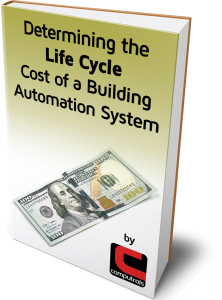by Andrew Walton
Static Air Pressure (SAP)
“Trim and response” is a way of controlling static air pressure (SAP) within a building’s HVAC system. SAP is one of the most important factors in HVAC design. SAP refers to the resistance to airflow in a heating and cooling system’s components and ductwork within a building. The push of the air must be greater than the resistance to the flow or no air will circulate through the ducts.
There are various factors that can restrict airflow which can dramatically affect SAP such as using 1-inch pleated air filters. Also during these unprecedented times of the coronavirus pandemic, there is a growing call for building engineers and HVAC systems to utilize stronger MERV-rated filters (between 11 and 13) to mitigate the coronavirus particles as much as possible. (See this article on addressing COVID-19 using your HVAC system.) The downside to using stronger air filters is a drop in SAP due to the higher restrictive nature of the denser filter. Regular cleaning of air filters will also keep airflow as unrestricted as possible. In short, additional resistance of any kind will compromise the efficiency of the HVAC system and cause energy costs to rise significantly.
Trim and Response is continuously adjusting a system’s setpoint so that it delivers just enough pressure to not starve the dampers or valves down the line. This is done by lowering the system’s setpoint until one of the devices is almost underserved. Once a device is underserved we raise the setpoint until the device is just meeting the setpoint. We do this once every 10 minutes to give the system some time to react. The trim and response approach ensures that your system is using the least amount of energy possible without causing comfort issues. By optimizing supply pressure in HVAC systems, significant energy savings can be achieved.
How do I Program Trim and Response in CBAS?
In this example, we will be adjusting the Duct Static Setpoint on an Air Handling Unit. We will lower the AHU’s Duct Static Setpoint until one of the VAVs served by the AHU has its damper approximately 90% open.
To program this in CBAS you first use an analog point that will represent the damper that is the most open.
Then adjust the Duct Static Setpoint up or down by 0.1″ every 10 Minutes.
If the Max Damper is between 85% and 95% open then no adjustment will be made.
To prevent a faulty damper from driving the Static Setpoint either too high or too low we set a minimum and maximum value.
This is just one example of using trim and response for Supply Pressure. We could also use trim and response for Supply Pressure to adjust the Air Handler Unit or AHU’s supply air temperature setpoint, or we can use it on hydronic systems to adjust temperature and pressure setpoints.




